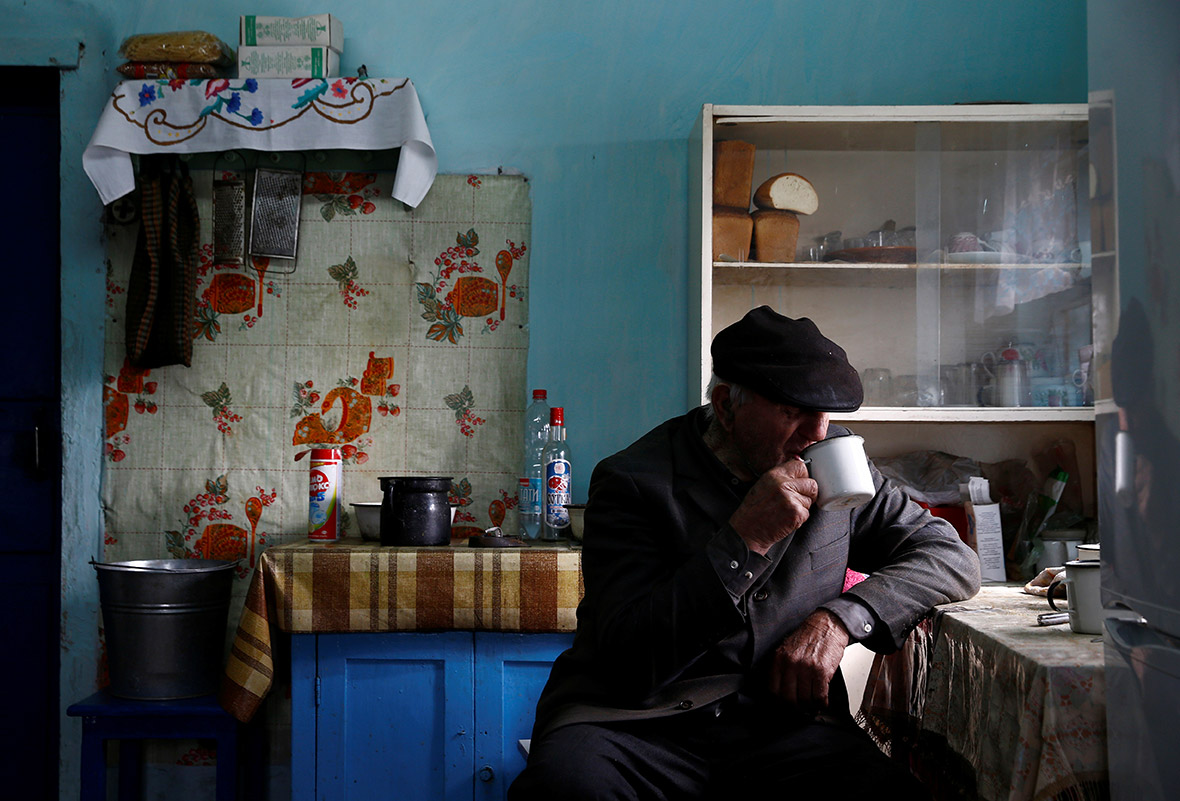Chernobyl: Ninety-year-old man living in nuclear shadow reveals secret to long life
The secret to a long life is not leaving the place of your birth – even when it is a village poisoned with radioactive fallout from a nuclear disaster. That's the advice of 90-year-old Ivan Shamyanok, who lives in the Belarusian village of Tulgovich, on the edge of the exclusion zone around Chernobyl.
Reuters photographer Vasily Fedosenko visited Shamyanok, one of just two people still living in the village.

He and his wife turned down the offer to relocate after the 1986 disaster. He says he's never felt any ill effects from the radiation. "So far, so good. The doctors came yesterday, put me on the bed and checked and measured me. They said 'everything's fine with you, granddad,'" Shamyanok told Reuters. "My sister lived here with her husband. They decided to leave and soon enough they were in the ground ... They died from anxiety. I'm not anxious. I sing a little, take a turn in the yard, take things slowly like this and I live," he said.







Shamyanok says life didn't change much after the meltdown at Chernobyl, the world's largest nuclear disaster. He and his family continued to eat vegetables and fruit grown in their own backyard and kept cows, pigs and chickens for the meat, milk and eggs. Now that his wife has died and children moved away, he and his nephew, who lives on the other side of the village, are the only people left. "Will people move back? No, they won't come back. The ones who wanted to have died already."



Shamyanok lives a quiet life. He gets up at 6am when the national anthem is played on the radio, lights his cast iron stove to heat his breakfast and feeds his pigs and his dog. A mobile shop operating out of the back of a car visits the village twice a week and on Saturdays Shamyanok's granddaughter comes to cook food for the week and clean his house. He says he doesn't have any problems with his health, but takes medication sometimes and drinks a small glass of vodka before meals "to help the appetite".

It is almost 30 years since the catastrophic accident at the Chernobyl nuclear power plant in Ukraine, which was then part of the USSR. On 26 April 1986 technicians at reactor number four of the nuclear power plant were conducting a systems test when there was a sudden power surge. The reactor's fuel elements broke, leading to a huge explosion and blowing off the reactor cap. This exposed the graphite covering the reactor to the air, and it ignited. The fire burned for nine days, sending a huge plume of radiation into the environment. It has been estimated that the Chernobyl disaster released into the atmosphere 400 times more radioactive material than the atomic bombing of Hiroshima in 1945.
More than 100,000 people had to abandon the area permanently, leaving native animals the sole occupants of an area of about 2,600 sq km (nearly 1,000 square miles, or roughly the size of Luxembourg).
The disaster killed 31 people immediately – almost all of them reactor staff and emergency workers. Between 30 and 50 emergency workers died shortly afterwards from acute radiation. The long-term effects are not yet known but a report suggested the eventual death toll could reach 4,000. Nobody can say for sure when the area will be safe again, but some scientists estimate that it could be 20,000 years before people can live near the plant again.
A 30,000 tonne "safe confinement" arch is being built to prevent more deadly particles spewing from the stricken nuclear reactor's site for the next 100 years. Nevertheless, nothing can be done to decontaminate trees and soil that suffered the worst of the nuclear fallout.
Special government permits, usually valid for a few days, are required for anyone wishing to visit the exclusion zone from the Belarussian side. Roads going into the zone are guarded to prevent any unauthorised person entering. While the rules of access are also strict on the Ukrainian side, small tour groups can visit sites within the zone, including the "ghost town" of Pripyat.
© Copyright IBTimes 2025. All rights reserved.






















